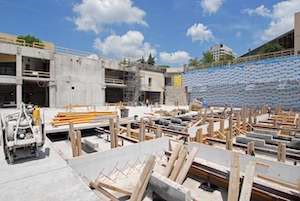Conference Board outlook report forecasts growth in Ontario
The latest Metropolitan Outlook report issued by the Conference Board of Canada (CBOC) calls for Ontario as a whole, and three of its major cities, to record GDP growth rates of around 2 percent through 2020 and 2021.
 The board, however, acknowledges that its report was prepared in early January and thus does not take into account the widespread effects of the COVID-19 pandemic. Indeed, in a separate document, the board reported that consumer confidence across the country recorded its largest-ever monthly decline in March.
The board, however, acknowledges that its report was prepared in early January and thus does not take into account the widespread effects of the COVID-19 pandemic. Indeed, in a separate document, the board reported that consumer confidence across the country recorded its largest-ever monthly decline in March.
The drop of 32 points—due in large part to recommendations from government to self-isolate to prevent further spread of the coronavirus—will have a profound impact on economic growth, says CBOC.
Every region in the country recorded double-digit drops in their consumer confidence indexes.
Consumer confidence in Ontario dropped by 26.7 points in March, with just 7.2 percent of workers in the province reporting that they felt their job prospects would improve in the near future.
Non-residential construction outlook remains strong
In its economic outlook for the entire province, the board projects GDP growth rates of 1.6 percent in 2020 and 1.8 percent in 2021. Both figures are up from the 1.4 percent gain recorded in 2019. The outlook, however, cautions that various domestic demand factors may contribute to slower growth—not the least of which is waning consumer confidence.
Nonetheless, the board predicts continued strong output in the non-residential construction industries of three of the province’s largest cities.
Light rail drives Ottawa construction
Activity in Ottawa is expected to be buoyed by the long-term construction of the $4.7 billion Stage 2 light rail expansion project. The work will see extensions to the city’s north-south Trillium Line and the east-west Confederation Line. It involves building or renovating 29 stations along 47 kilometres of track. The project features staggered opening dates over the next five years.
The forecast also cites work on the redevelopment of LeBreton Flats. The National Capital Commission has approved a preliminary master concept plan for the project, which will be up for municipal approval this year. The first construction work on site will likely be the new central library, a $192‐million project set to start in 2021.
The board forecasts strong output for the city’s residential construction industry, but with more than 43 percent of Canadians indicating in the consumer confidence report that now is a bad time to make a major purchase, that information may already be out of date.
ICI demand strong in GTA
CBOC’s outlook for Toronto’s construction market is also influenced by projected output in the residential sector. Demand for ICI projects, however, appears strong. Major projects underway include the $5.3‐billion Eglinton Crosstown, a 19‐kilometre LRT line expected to be complete in 2021, the $640‐million expansion of Highway 401, slated to be done by 2022, and the $823‐million revitalization and expansion of Toronto’s Union Station, scheduled to wrap up this September.
Additional activity includes construction work on the Schwartz Reisman Innovation Centre at the University of Toronto, the six-phase SickKids hospital redevelopment project, CIBC Square, The Well, and a variety of office towers.
Hamilton construction expected to bounce back
Construction activity in Hamilton is forecasted to be strong in 2020 and 2021. That market is recovering from two years of contractions—by 1.4 percent in 2018 and 4.7 percent in 2019. Last year’s slide in particular was due to factors that led to a massive pullback in the city’s residential market.
The board suggests that activity in Hamilton’s non-residential construction market is expected to remain busy this year and next. Key projects include work on the $138.9‐million Randle Reef cleanup, which involves the remediation of about 695,000 cubic metres of contaminated sediment in the Hamilton Harbour, and is expected to be completed by 2022.
As well, the Panattoni Group broke ground last fall on a $30‐million, 264,535‐square‐
foot warehouse at the Airport Employment Growth District, with completion scheduled for this year. Hamilton’s airport is also seeing a $39-million rehabilitation project, and the Woodward Wastewater Treatment Plant is spending $340 million on upgrades.








